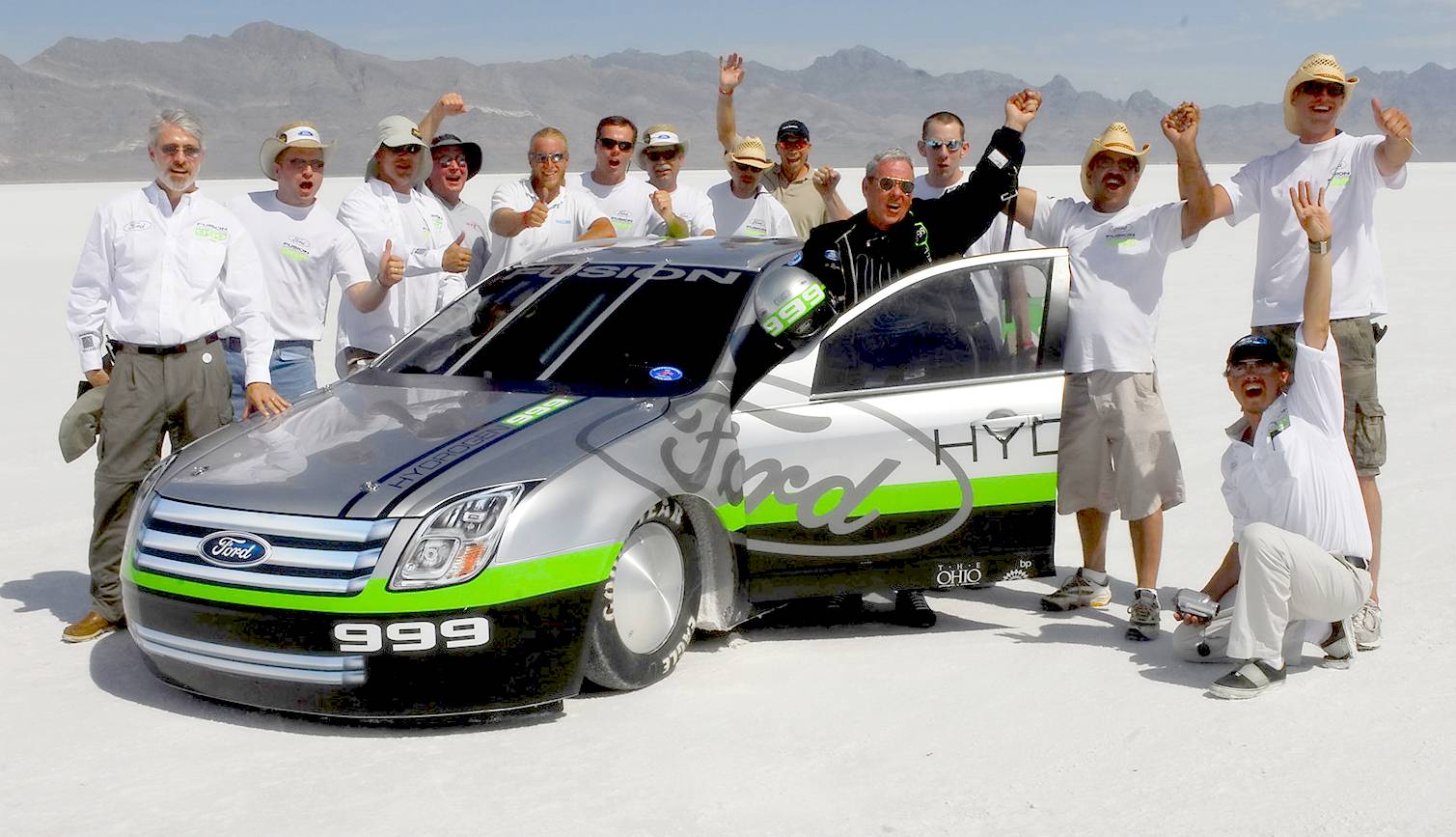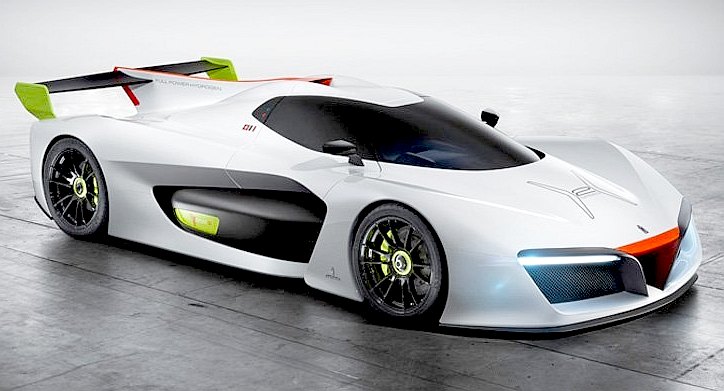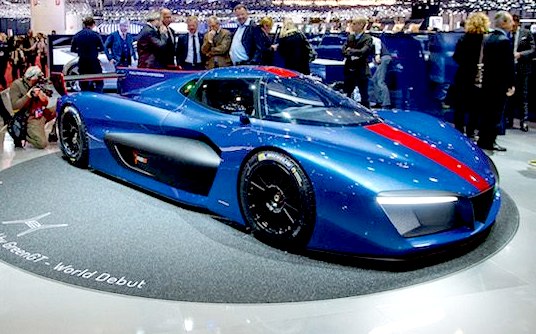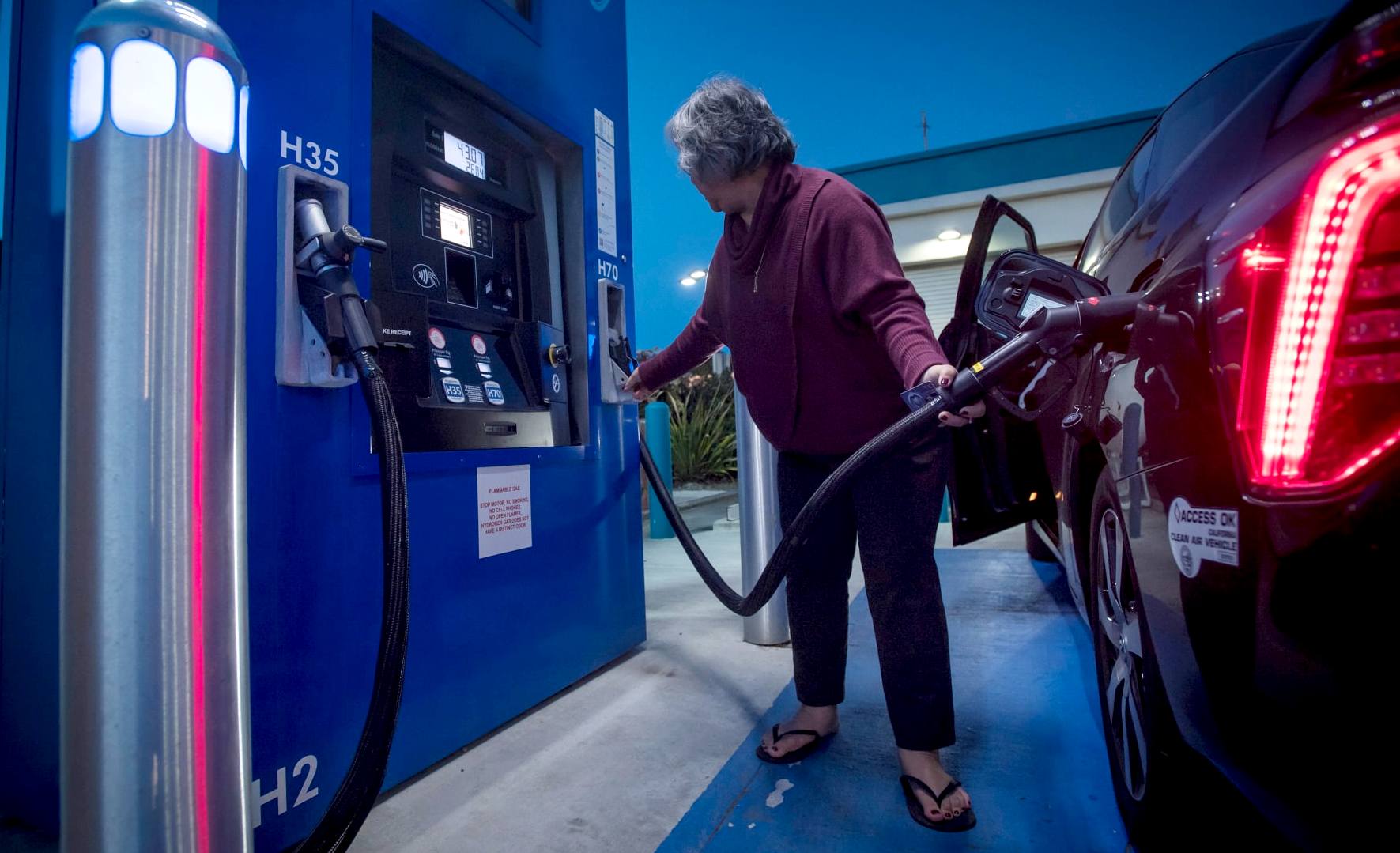|
SMARTCHARGER
AUTOMOTIVE A TO Z CLIMATE CHANGE A TO Z CONTACTS EVENTS GROWTH A-Z PLEASE USE OUR SITE INDEX TO NAVIGATE THIS SITE |
|
|
SMART-CHARGER - This graceful electric car concept is potentially the world's fastest vehicle to be powered by hydrogen energy cartridges. This streamliner is theoretically capable of 400mph using the latest production electric motors, but is designed to beat 208mph at Pendine Sands in the United Kingdom, to beat the Ford Fusion 999 record, and then 350mph at the Bonneville Salt Flats in the USA, to beat the Buckeye Bullet 2 record of 303mpm. Featuring built in energy cartridge swapping system, charged using renewable solar energy. A unique PR opportunity in celebration of the EU banning petrol and diesel cars in Europe and the UK from 2030.
The Venturi Buckeye Bullet 3 improved on that with a speed of 341mph, but that was battery powered. If the SmartCharger could overtake that, raising the record above 350mph, that would be a real achievement for fuel cell cars.
The idea is to use a Universal liquid hydrogen cartridge, as might be used in family cars as a single unit, or as multiples in electric long haul trucks.
BMW set a record for a hydrogen gas fuelled internal combustion engine car in 2004, but that does not count here, it is just useful background information. More to the point, Ford's Fusion 999 set a superb land speed record in 207mph, that even Pininfarina's $2.5 million dollar 'H2 Speed' cannot beat.
Hence, there is an opportunity here to set a zero emission record to promote hydrogen as a clean and renewable fuel of the future. In this case we'd be using standard energy cartridges that are designed for ordinary road vehicles.
Interestingly, the car can also run on battery cartridges of an identical size and loading configuration.
The project is pitched at a very keen €15 million Euros, to include an attempt at Pendine Sands, in Wales and another €4 million Euros, to include an attempt at the Bonneville Salt Flats in Utah. Details available on request from the Climate Change Trust.
FORD PRESS RELEASE AUGUST 2007 - FORD SETS LAND SPEED RECORD WITH FORD FUSION HYDROGEN 999 FUEL CELL RACECAR
The Ford Fusion Hydrogen 999 is Ford's latest environmental innovation, another step on the road toward commercially viable hydrogen fuel cell vehicles.
The car was designed and built by Ford engineers in collaboration with Ohio State University, Ballard Power Systems and Roush.
WENDOVER, Utah, August 16
Ford Motor Company today became the world's first automaker to set a land speed record for a production-based fuel cell powered car. The
Ford Fusion Hydrogen 999 fuel cell car raced to 207.297 mph at the Bonneville Salt Flats in Wendover, Utah to set the record.
A hydrogen vehicle is a vehicle that uses hydrogen fuel for motive power. Hydrogen vehicles include hydrogen-fueled space rockets, as well as automobiles and other transportation vehicles. The power plants of such vehicles convert the chemical energy of hydrogen to mechanical energy either by burning hydrogen in an internal combustion engine, or, more commonly, by reacting hydrogen with oxygen in a fuel cell to run electric motors. Widespread use of hydrogen for fueling transportation is a key element of a proposed hydrogen economy.
In
2004 the BMW H2R set nine world speed records for internal combustion powered vehicles using hydrogen as a fuel. The H2R has a 0-60 acceleration in under 6 seconds and a top speed
of 187.62 mph (301.95 km/h) from 232 horsepower (173 kW).
In March 2016 Pininfarina unveiled their concept hydrogen-powered car at the Geneva Motor Show, and not only is it a futuristic little number, it's also the fastest of its kind.
While it's certainly not the first automaker to explore the creation of hydrogen cars – Toyota, Audi, and Honda are known brands that are investing into the technology as well – Pininfarina is the first one to create a hydrogen-powered vehicle that is this fast.
In
March 2018 the production version of the H2 was shown in Geneva. Pricing
is said to be in region of $2.5-million.
MAKING ENVIRONMENTALLY FRIENDLY HYDROGEN FUEL
Hydrogen can be produced by using electricity to split water split water into hydrogen and oxygen with renewable solar and wind energy via electrolysis.
LINKS & REFERENCE
http://www.hydrogencarsnow.com/index.php/bmw-hr2/ https://www.sciencealert.com/this-is-the-fastest-hydrogen-powered-car-ever-designed-and-it-s-simply-astounding https://ecofriend.com/bmw-presents-hybrid-car.html https://digimission.com/2005/02/28/world-fastest-hydrogen-powered-car/ http://www.seriouswheels.com/cars/top-2007-Ford-Fusion-Hydrogen-999-Land-Speed-Record.htm https://fareastgizmos.com/other_stuff/ford_fusion_hydrogen_999_aims_for_land_speed_record.php http://www.h2v.eu/ https://en.wikipedia.org/wiki/Hydrogen_vehicle
HYDROGEN FILLING STATIONS - There is nothing wrong with this scenario except that it means dedicated hydrogen service stations and dedicated hydrogen powered electric vehicles - with no chance of changing technology, to and from batteries, as technology develops. The buying public is therefore at risk of losing their investment, as if they were putting all their eggs in one basket, when there is no need for that.
|
|
|
The
content of this website is copyright © 2020 Climate Change
Trust. All rights reserved. The
blue bird logo
|





